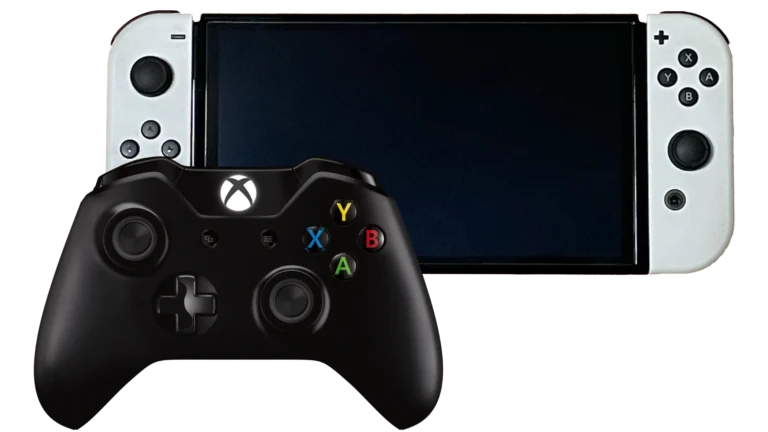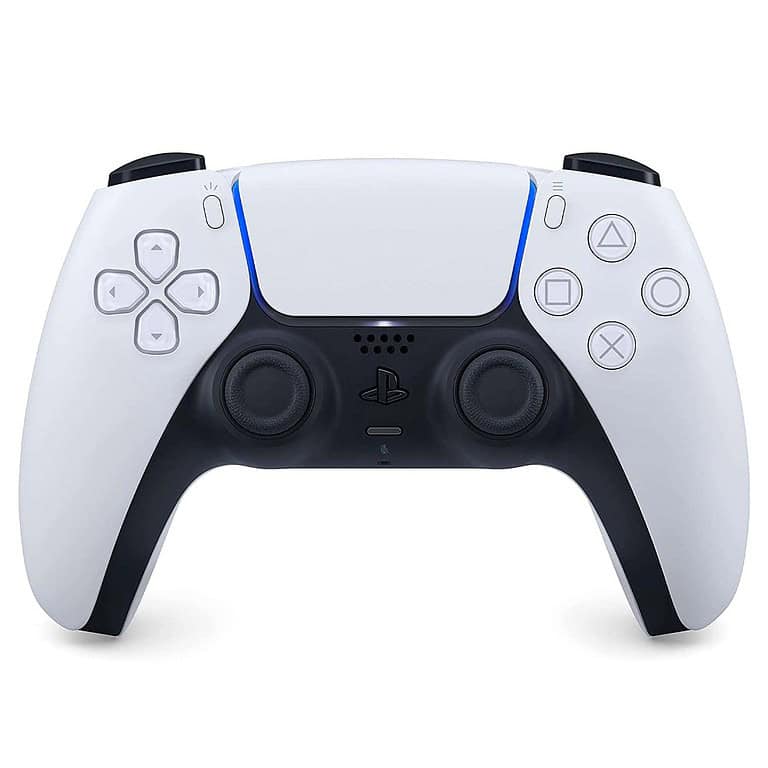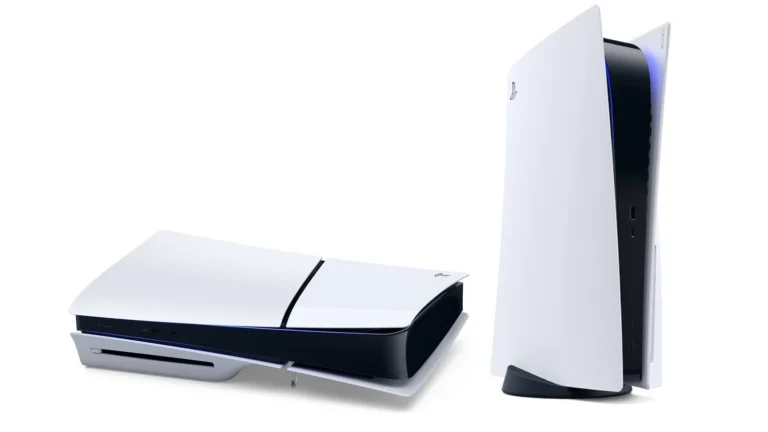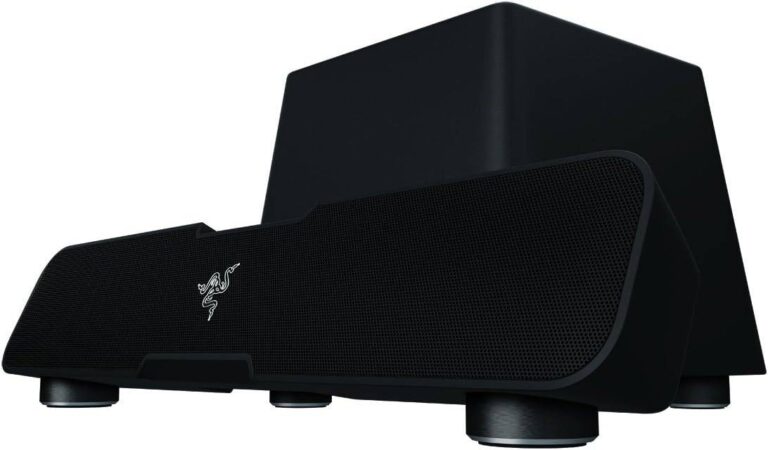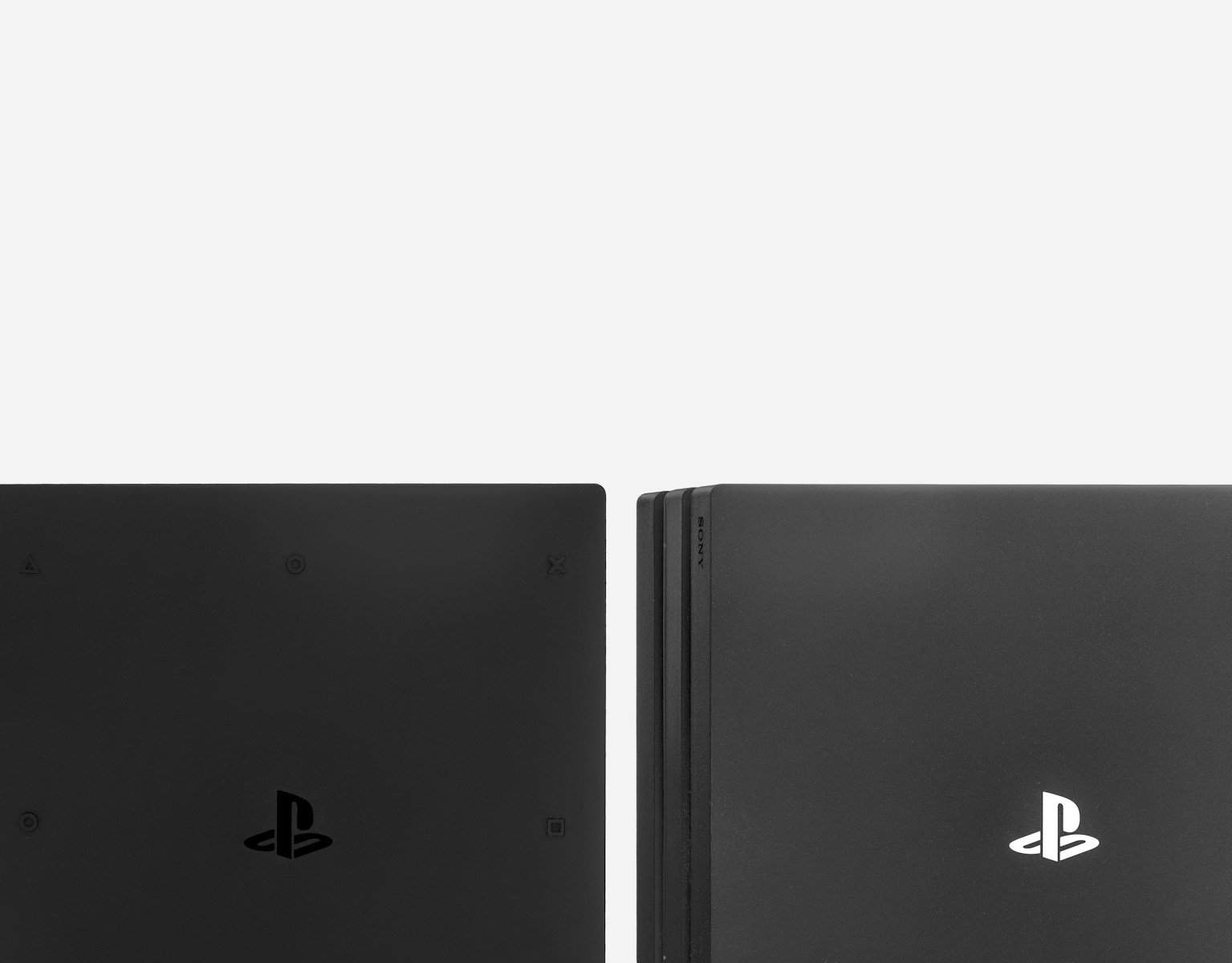
The PlayStation 4 has had an impressive run since its launch in 2013, becoming one of the best-selling consoles of all time. Now that the PlayStation 5 is firmly established, many PS4 users are wondering: how long will the PS4 continue to work, and how long will Sony keep supporting it? Here’s a full breakdown of what to expect in 2025 and beyond.
How Long Does a PS4 Last?
The physical durability of the PS4 is surprisingly robust—many early adopters are still using launch-day units over a decade later. With proper care, the average PS4 lifespan falls between 7 and 10 years, although many units last longer.
Key Factors That Impact Longevity:
| Factor | Impact on Lifespan |
|---|---|
| Usage Frequency | Heavy daily use can cause faster wear |
| Maintenance | Regular dusting and ventilation help cooling |
| Environment | Heat, humidity, and poor airflow are enemies |
Tips to Extend PS4 Lifespan:
- Place the console in a cool, open space with good airflow.
- Clean dust from vents and fans every few months.
- Use a surge protector to guard against power fluctuations.
- Replace the internal thermal paste after a few years if overheating becomes an issue.
Even if hardware failures like HDD or disc drive malfunctions occur, these are often repairable. A PS4 doesn’t become obsolete just because Sony shifts focus—it continues functioning for offline and many online games.

Game Support & Software Updates
Sony is gradually phasing out PS4 support, but the process is slow and measured. The PS4 ecosystem still has millions of active users, and Sony knows better than to pull the plug abruptly.
Current Status as of May 2025:
| Aspect | Status |
|---|---|
| System Software Updates | Security and stability updates ongoing through 2025 |
| New Game Releases (AAA) | Rapidly declining, PS5 exclusivity rising |
| Free-to-Play Games | Ongoing support (e.g., Fortnite, Warzone) |
| PlayStation Plus | PS4 games phased out from Monthly Games by Jan 2026 |
| PlayStation Store Access | Still operational for PS4 users |
Important Notes:
- The “What’s New” activity feed and social sharing features are being retired as of March 25, 2025.
- PS4 versions of major franchises like Call of Duty or FIFA may continue a bit longer, but expect PS5 versions to become the standard.
Will the PS4 Be Obsolete Soon?
No—but it is on borrowed time.
Sony typically maintains online services for older consoles for years after official development stops. The PS3, for instance, received updates and access to online services for over a decade. We can reasonably expect:
- PSN access for multiplayer and cloud saves to continue into 2026–2027.
- Digital purchases from the PlayStation Store to remain accessible to existing PS4 users.
- Game patches and bug fixes from developers (especially indie and live-service games) to persist for a few more years.
What’s disappearing first is first-party game support. Sony is no longer developing new PS4 exclusives, focusing entirely on PS5 hardware and its ecosystem.
PS4 vs PS5: Generational Shift
| Category | PlayStation 4 | PlayStation 5 |
|---|---|---|
| Launch Year | 2013 | 2020 |
| Lifespan | 7–10+ years (still ongoing) | Expected through ~2030 |
| First-Party Support | Ends in 2025 | Actively supported |
| Cross-Gen Titles | Rapidly declining | Now the development focus |
| Online Services | Available through 2026+ | Fully operational |
Should You Upgrade?
If you’re still gaming on a PS4 in 2025, you’re not alone—but you are likely missing out on:
- Faster load times with SSDs
- Higher frame rates and better visuals
- PS5-exclusive titles like Spider-Man 2, Final Fantasy VII Rebirth, Stellar Blade, and more
However, if you’re a casual gamer sticking to indie games or free-to-play titles, there’s no urgent need to upgrade unless your current hardware starts showing signs of wear.
Final Verdict
The PS4 still has life left, but it’s clearly in its final chapter. Sony will maintain software updates and basic services through 2025, but by early 2026, it will no longer be a core part of the PlayStation ecosystem. If you want to keep playing the latest AAA games, the transition to PS5 is inevitable—but if you’re happy with your current game library and playstyle, the PS4 remains a solid and reliable platform for at least another year or two.
How to Reboot a PS4
Is your PS4 frozen or running slow? You’re not alone. Many PlayStation 4 users face situations where they need to reboot their console to fix issues or improve performance. To reboot a PS4, press and hold the power button for about 7 seconds until you hear two beeps, or if completely frozen, unplug the power cord for 30 seconds before reconnecting it.
Rebooting your PS4 is a simple process that can solve many common problems like game freezes, slow performance, or network connection issues. Think of it as giving your console a fresh start. It’s an essential troubleshooting step that often works wonders before trying more complex solutions.
Key Takeaways
- Rebooting your PS4 can fix freezing issues, slow performance, and many common software glitches without losing your game data.
- You can perform a soft reboot through the menu or a hard reboot by holding the power button when your console is unresponsive.
- The PS4 Safe Mode offers advanced restart options for solving more serious system problems.
Understanding the PS4 System
The PlayStation 4 features specific hardware components and system software that work together to deliver gaming experiences. Knowing how these elements function can help you troubleshoot issues when they arise.
Basic PS4 Architecture
The PS4 console contains several key hardware components that power your gaming experience. At its core is an AMD x86-64 processor paired with 8GB of GDDR5 RAM that handles both game processing and graphics rendering.
Your PS4 includes a built-in hard drive for system storage which ranges from 500GB to 2TB depending on your model. This storage houses the operating system, games, apps, saved game data, and screenshots.
The console features various connection ports including:
- HDMI output
- USB ports for controllers and accessories
- Ethernet port for wired internet
- Optical audio output (on original models)
PS4 models come in three main variations: the original PS4, the slimmer PS4 Slim, and the more powerful PS4 Pro. Each offers different capabilities while maintaining compatibility with the same game library.
PS4 System Software Overview
The PS4 System Software (also called firmware) is the operating system that controls everything your console does. Sony regularly releases updates to improve stability, add features, and fix security issues.
Your PS4 interface is built around the Dynamic Menu, which provides access to:
- Games and applications
- PlayStation Store
- Trophies
- Friends and messaging
- Settings
System software updates can be installed automatically when your PS4 is in Rest Mode or manually through the Settings menu. Keeping your system up-to-date is essential for the best performance and security.
The PS4 operating system allows background processes like game downloads to continue while you play. It also supports features like Remote Play and Share Play that let you stream your gameplay to other devices or friends.
Preparing for Reboot
Before rebooting your PS4, taking a few precautionary steps can save you time and prevent potential data loss. Proper preparation ensures your game progress and important files remain intact during the process.
Checking System Storage
First, check your PS4’s system storage to understand what’s taking up space. This can help identify if storage issues might be causing problems that require a reboot.
To check your storage:
- Go to Settings on your PS4 home screen
- Select Storage
- Review the breakdown of used space
Your PS4 will display how much space is being used by games, applications, saved data, and other content. If your storage is almost full (over 90%), consider deleting unnecessary games or applications before rebooting. Full storage can cause system performance issues.
You might notice some games or applications using more space than expected. These could be causing your system to run slowly. Make note of particularly large items that you might want to reinstall after your reboot.
Backing Up Data
Backing up your data is crucial before performing any system reboot, especially if you’re planning a full reset.
You have two main options for backing up PS4 data:
Option 1: PS Plus Cloud Storage
- If you have a PlayStation Plus subscription, your save data may already be backing up automatically
- Verify by going to Settings > Application Saved Data Management
- Select Saved Data in System Storage > Upload to Online Storage
Option 2: External Storage
- Connect a USB drive formatted for PS4 (FAT32 or exFAT)
- Go to Settings > Application Saved Data Management
- Choose Saved Data in System Storage > Copy to USB Storage
- Select which games’ save data to back up
Don’t forget to also save any screenshots or video clips you want to keep. These can be copied to a USB drive through the Capture Gallery application.
Rebooting Your PS4
When your PS4 freezes or experiences performance issues, a proper reboot can often solve the problem. There are several methods to restart your PlayStation 4, depending on how responsive your system is.
Performing a Soft Reset
If your PS4 is frozen but still somewhat responsive, a soft reset is your first option. To perform a soft reset, press and hold the power button on the front of your console for about 7 seconds until you hear two beeps. The first beep occurs when you initially press the button, and the second beep comes after holding it down.
This method safely turns off your PS4 without risking data corruption. Once the console is completely off, wait about 30 seconds before turning it back on to ensure all systems have fully shut down.
For controllers that aren’t responding, you can reset them by holding the power button on the console while the system is powered down.
Using Safe Mode
When your PS4 has more serious issues, Safe Mode provides additional recovery options. To enter Safe Mode:
- Turn off your PS4 completely (not Rest Mode)
- Press and hold the power button for about 7 seconds until you hear two beeps
- Connect your controller using a USB cable
- Press the PS button on your controller
Once in Safe Mode, you’ll see several options:
- Restart System: A simple reboot
- Rebuild Database: Reorganizes system files without deleting data
- Update System Software: Installs latest software
- Restore Default Settings: Resets settings but keeps data
Choose the option that best addresses your specific issue. For most problems, “Restart System” or “Rebuild Database” will resolve frozen PS4 issues without data loss.
Rebooting from the Power Menu
If your console is responding but running slowly, you can use the PS4’s power menu:
- Press and hold the PS button on your controller
- Select “Power” from the quick menu
- Choose “Restart PS4”
This method properly closes all applications and performs a clean reboot. It’s ideal for resolving minor performance issues like lag or slow loading times.
You can also use this menu to put your PS4 in Rest Mode, which uses less power while still allowing background downloads and controller charging.
For persistent problems, you might need to sign out and back into your account by going to Settings > Account Management > Sign In and pressing the triangle button.
Troubleshooting Common Issues
When your PS4 experiences problems, knowing the right steps to fix common issues can save you time and frustration. These solutions address both system freezes and startup failures.
Resolving Freezing Issues
If your PS4 freezes during gameplay or while using apps, try these steps:
Perform a soft reset by holding the power button until you hear two beeps. This forces the console to shut down without damaging your system files.
Check for overheating. Place your PS4 in a well-ventilated area and make sure vents aren’t blocked by dust or objects.
Update your system software. Outdated software often causes freezing issues. Go to Settings > System Software Update to install the latest version.
Sometimes corrupted data causes freezing. You can rebuild the database by:
- Turn off your PS4 completely
- Hold the power button until you hear two beeps
- Connect your controller with USB cable
- Select “Rebuild Database” from the Safe Mode menu
Fixing Boot-Up Problems
When your PS4 won’t turn on, try the following troubleshooting steps:
First, check the power supply. Unplug your PS4 from the outlet for at least one minute, then reconnect it. Try a different power outlet to rule out electrical issues.
If that doesn’t work, boot in Safe Mode by:
- Turn off your PS4 completely
- Press and hold the power button until you hear two beeps
- Connect your controller with a USB cable
From Safe Mode, you can:
- Update System Software (fix corrupted files)
- Restore Default Settings (keeps your games and data)
- Initialize PS4 (factory reset – backs up your data first)
For persistent issues, check your hard drive connections or consider professional repair options if your warranty has expired.
Advanced Reboot Options
When your PS4 isn’t functioning properly, there are several powerful reset options available beyond a simple restart. These options can help fix software issues, prepare your console for sale, or repair corrupted system files.
Restore Default Settings
If your PS4 is having minor issues, you can reset its settings without losing your games and data. This option returns all system settings to their original values but keeps your downloaded games, saved data, and user accounts intact.
To restore default settings:
- Go to Settings > Initialization
- Select Restore Default Settings
- Follow the on-screen prompts to confirm
This process resets network settings, display configurations, and sound settings. Your PS4 will restart after completion.
Consider using this option when experiencing:
- Unusual display or audio problems
- Network connectivity issues
- Controller pairing difficulties
You can also access this option through Safe Mode by holding the power button for about 7 seconds until you hear two beeps.
Initialize PS4
When more serious problems occur or you want to sell your console, initializing your PS4 completely wipes all data and returns it to factory condition.
Warning: This deletes ALL games, saves, screenshots, videos, and user accounts.
Two initialization options are available:
- Quick Initialization: Faster but less secure, as data could potentially be recovered
- Full Initialization: More thorough and secure, but takes several hours
To initialize your PS4:
- Back up your saved data to USB or PS Plus cloud
- Go to Settings > Initialization > Initialize PS4
- Choose your initialization type
- Follow the prompts to confirm
If your PS4 is frozen and you can’t access the settings menu, you can force a restart by holding the power button for several seconds.
Reinstall System Software
For severe system problems where your PS4 won’t boot properly or shows error codes, reinstalling the system software is your last resort.
You’ll need:
- A computer with internet access
- A USB drive with at least 1GB free space (formatted as FAT32)
- The latest PS4 update file from PlayStation’s website
Steps to reinstall:
- Create a folder named “PS4” on your USB drive
- Inside the PS4 folder, create another folder named “UPDATE”
- Download the latest system software and save it in the UPDATE folder
- Name the file “PS4UPDATE.PUP”
- Boot your PS4 in Safe Mode (hold power until two beeps)
- Connect your controller with a USB cable
- Select “Initialize PS4 (Reinstall System Software)”
- Follow the on-screen instructions
This process can fix corruption issues that other reset methods can’t address.
Using External Devices
External devices can be essential tools when you need to reboot your PS4. They provide backup options and alternative ways to access system functions when your console isn’t working properly.
Connecting a Laptop or PC
To connect your PS4 to a computer, you’ll need a USB cable that fits your PS4 controller port. This connection allows you to perform several helpful tasks when your console needs rebooting.
First, ensure both your computer and PS4 are powered on. Connect the USB cable between your PS4 and your laptop or PC. Your computer should recognize the PS4 as an external device.
From your computer, you can access certain PS4 functions like transferring update files. This is particularly useful when your PS4 displays an error message saying “Cannot Start the PS4” and requires an update file.
If your PS4 has become corrupted, connecting to a computer may be your best option. You can download system software from the PlayStation website to your computer, then transfer it to your PS4.
Using a USB Drive for Backup
A USB storage device is often the simplest solution for PS4 rebooting issues. The PS4 system is designed to recognize USB drives for both backup and system recovery.
Required items:
- USB drive (minimum 1GB, formatted to FAT32)
- Access to PlayStation.com for system files
When your PS4 needs a system reset, connect the USB storage device directly to the PS4. The USB ports are located on the front of the console.
Before using a USB drive for system recovery, visit the PlayStation website on another device to download the correct system software file. Save this file to your USB in the proper folder structure (PS4 > UPDATE).
If your PS4 has been corrupted, you’ll need to choose between updating with a USB or performing a complete reset using a reset file. The update option preserves your data while resetting erases everything.
Contacting Support
Sometimes PS4 issues can’t be fixed with a simple reboot. PlayStation offers several support options when you need professional help with your console problems.
When to Contact PlayStation Support
If your PS4 continues to have problems after trying basic troubleshooting steps like rebooting, it’s time to contact PlayStation Support. You should reach out if you experience:
- Persistent startup or shutdown issues
- Console overheating
- Error codes that don’t resolve with restart
- Software that won’t update or install
- Complete system failure
Before calling, try the online troubleshooting guides on the PlayStation support website. Many common problems have step-by-step solutions already documented.
PlayStation Support can be reached through their website chat, phone support, or through social media channels. Response times vary based on your region and the contact method you choose.
Documenting Your Issue for Support
Prepare information about your problem before contacting support to make the process more efficient. Take notes about:
Your system details:
- PS4 model (original, Slim, or Pro)
- System software version
- When the problem started
Problem specifics:
- Error codes or messages that appear
- What you were doing when the issue occurred
- Steps you’ve already taken to fix it
Take clear photos of any error messages that appear on your screen. These can be sent via email to support agents if requested.
Keep track of all troubleshooting steps you’ve tried. This prevents repeating solutions that didn’t work and helps support agents better understand your situation.
Maintaining Your PS4
Proper maintenance of your PS4 console extends its lifespan and ensures optimal performance during gaming sessions. Regular care prevents common issues that might interrupt your gameplay experience.
Regular Software Updates
Keeping your PS4 system software updated is essential for optimal performance and security. Your console will typically notify you when updates are available, but you can also check manually by going to Settings > System Software Update.
Updates provide crucial benefits:
- Performance improvements for smoother gameplay
- Security patches to protect your account information
- New features that enhance your gaming experience
- Bug fixes that resolve known issues
You can set your PS4 to download updates automatically. Go to Settings > System > Automatic Downloads and enable “System Software Updates.” This way, your console will download updates during rest mode when connected to the internet.
If you’re experiencing performance issues, checking for a pending update should be one of your first troubleshooting steps.
Cleaning and Care for Your Console
Dust accumulation is one of the biggest threats to your PS4’s longevity. A clean console runs cooler and quieter, reducing the risk of overheating problems.
External cleaning tips:
- Use a soft, dry cloth to wipe dust from the console surface
- Clean vents with compressed air every 1-2 months
- Keep your PS4 in a well-ventilated area, not enclosed spaces
- Place the console on a hard, flat surface
Environment considerations:
- Maintain room temperature between 41°F-95°F (5°C-35°C)
- Keep your PS4 away from direct sunlight
- Avoid placing liquids near your console
- Ensure at least 4 inches of clearance around all sides for airflow
You should restart your PS4 once every few weeks to clear the system cache and prevent performance slowdowns. For deeper cleaning, power down completely and unplug all cables first.
Frequently Asked Questions
Rebooting your PS4 correctly can solve many technical issues and improve performance. These common questions address specific restart methods for different situations and models.
What steps are required to restart a PS4 system using the console buttons?
To restart your PS4 using console buttons, press and hold the power button on the front of the console until you hear two beeps. The first beep will sound immediately, and the second beep will occur after about 7 seconds.
Release the power button after the second beep. Your PS4 will shut down completely. Wait about 30 seconds before pressing the power button again to restart the system.
This method is useful when your PS4 is frozen or unresponsive and you cannot access the menu options.
How can one reboot a PS4 system without causing data loss?
To safely reboot your PS4 without losing data, use the menu restart option. Press the PS button on your controller to access the quick menu, then select Power > Restart PS4.
If your system is responding slowly but still functional, this method ensures all data is properly saved before restarting. Your games, saves, and settings will remain intact.
For games in progress, consider saving your game before restarting to prevent any progress loss.
What is the procedure to restart a PS4 system without using a controller?
If your controller isn’t working, you can restart your PS4 using only the console buttons. Press the power button on the front of the console once to put it in Rest Mode.
Wait until the power indicator stops flashing and turns orange. Then press the power button again to turn the console back on.
For a full restart without a controller, you can also unplug the power cable from your console for at least 30 seconds, then plug it back in and press the power button.
How does one initiate a PS4 restart while in Safe Mode?
To restart your PS4 in Safe Mode, first turn off your console completely. Then press and hold the power button until you hear two beeps (about 7 seconds apart).
Connect your controller using a USB cable and press the PS button. The Safe Mode menu will appear with several options.
Select “Restart PS4” (Option 1) to perform a simple restart. This is the safest option that won’t affect your data or settings.
What are the instructions for rebuilding the PS4 database to improve system performance?
Enter Safe Mode by turning off your PS4 completely, then holding the power button until you hear two beeps. Connect your controller with a USB cable and press the PS button.
Select “Rebuild Database” (Option 5) from the Safe Mode menu. This will scan your drive and create a new database of all content.
Rebuilding the database can fix issues like game freezing and slow performance. It doesn’t delete your games or saved data, but may take several hours depending on your storage.
What methods exist for rebooting different PS4 models like the PS4 Slim and PS4 Pro?
The PS4 Slim uses the same restart methods as the original PS4. Press and hold the power button until you hear two beeps to enter Safe Mode, or press it once for a normal shutdown.
For the PS4 Pro, the power button is located on the front of the console, but it’s smaller and positioned differently than on standard models. The restart procedure remains the same.
All PS4 models can be restarted through the system menu by selecting Power > Restart PS4, which is often the safest option when the system is responsive.


